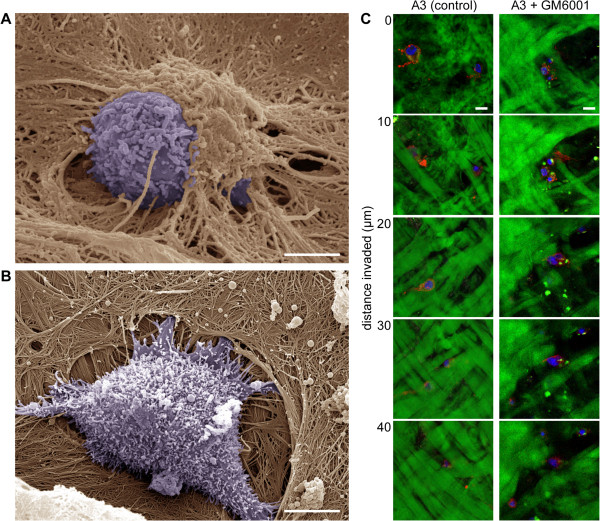Figure 2.
A3 cells use the amoeboid mode of invasion. Initial steps of dermis-based matrix invasion were visualized by scanning electron microscopy. (A) A3 cells maintain rounded morphology, and during invasion they appear to push themselves under extracellular matrix fibers. Scale bar 5 μm. (B) RsK4 cells are positioned partially inside a cavity and are surrounded with wrapped fibers. Scale bar 5 μm. (C) Invasive capability of A3 cells is not affected by the presence of 20 μM metalloproteinase inhibitor GM6001 (as also shown in Figure 1). A3 cells were seeded on FITC-stained dermis (green) and after 3 days were fixed and stained by Phalloidin for F-actin (red) and by DAPI for nuclei (blue). The images series represent serial optical sections captured at 10 μm intervals from top of dermis-based matrix (0 μm) to 40 μm of invasion depth. Scale bars 10 μm.

